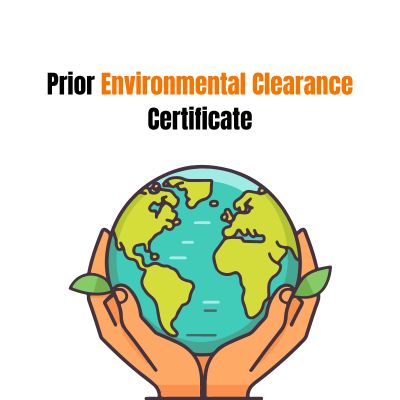

Any project or activity that might have an effect on the environment must first obtain prior environmental clearance. Planning an industrial operation, infrastructure development, or building project all require careful attention to detail in order to ensure environmental rules are followed. Here's how to apply for a previous environmental clearance certificate; step-by-step instructions are provided:
It's essential to become familiar with the legal framework controlling environmental clearances in your area before beginning the application procedure. Regarding environmental clearance, laws, rules, and recommendations may differ from nation to nation. The Environmental Impact Assessment (EIA) Notification, 2006, for example, describes how to get environmental clearance for different projects in India.
Projects are divided into many degrees according on how they might affect the environment. These categories usually consist of three: Category A, B1, and B2. Category A denotes initiatives having the most possible impact, while Category B2 denotes programs having the least possible impact. You may decide the level of inspection and evidence needed for the environmental clearance procedure by knowing the category your project falls into.
The basis for your application for environmental clearance is a comprehensive project report (DPR). It should include all the details of the project, such as its goals, extent, setting, technology, and possible effects on the environment. A thorough environmental management plan (EMP) describing steps to reduce negative effects and advance sustainable practices should also be included in the DPR.
An environmental impact assessment (EIA) is required for projects classified as Category A and for some projects classified as Category B1. The positive and negative possible environmental effects of the project are systematically evaluated as part of the EIA. By identifying potential hazards and developing suitable mitigation strategies, this assessment helps reduce negative environmental effects.
Stakeholder participation must be done effectively at every stage of the environmental clearance process. Involve non-governmental organizations (NGOs), local communities, and other pertinent stakeholders in order to get their opinions, resolve any issues they may have, and incorporate their suggestions into the project's planning and mitigation strategies. Inclusion and transparency in the decision-making process build community support and increase legitimacy.
It's time to submit your application for Prior Environmental Clearance Certificate once you have created the relevant paperwork, which includes the environmental management plan, the full project report, and the environmental impact assessment report (if necessary). Make sure your application complies with the precise guidelines specified in the regulatory framework and is correct and full.
The regulatory body will start a comprehensive review procedure to evaluate the project's environmental effects as soon as it receives your application. Technical examination, site visits, and discussions with pertinent specialists and stakeholders may all be part of this evaluation. As questions or concerns are brought up during the review process, be ready to respond and offer any details or explanations as necessary.
Public consultation is a required step in the environmental clearance process in many jurisdictions, particularly for projects that have a substantial environmental impact. Stakeholders and impacted communities can voice their opinions, voice concerns, and ask questions about the project via public hearings or consultations. Engaging in public consultations is a sign of your dedication to openness and responsibility.
The regulatory body will decide on your environmental clearance application after reviewing it thoroughly and taking all pertinent information into account. The choice could be to approve the application subject to a few requirements, deny it, or ask for additional changes to solve certain issues. Make sure that all requirements are followed as soon as possible, and endeavor to put the authorized environmental management plan into action.
Getting environmental clearance is just the first step in your ongoing obligation to keep an eye on and reduce any negative effects on the environment during the course of the project. Follow the environmental management plan to the letter, keep a close eye on important criteria, and provide reports on regulatory compliance within the designated timeframes. Keeping your operations accountable and transparent can help you gain the respect and confidence of your stakeholders.
One of the most important steps in guaranteeing sustainable development and reducing negative environmental effects is applying for prior environmental clearance. You may successfully navigate the clearance process and help safeguard our natural resources for future generations by adhering to the required protocols, interacting with stakeholders, and implementing best practices in environmental management.





We are the pioneers in offering environmental consulting services to our patrons, giving us the first mover advantage & keeping us ahead of our competitors.
Very experienced in filing, monitoring & submission of CDSCO Compliances, Drugs Manufacturing & sale guidelines, Environmental Impact Assessment, AERB consulting services, Pollution Control Board CTE & CTO Advisory Services, Waste Management Authorization from State Pollution Control Boards, Fertilizers & Insecticides Manufacturing, Wholesale & Import Compliances
